Monday, May 19, 2014, 6:00 – 10:00 pm
Beach BBQ: 6:00 – 8:00 pm, Beachside Sun Decks,
Demos: 7:00 – 10:00 pm, Talk Room 1-2, Royal Tern, Snowy Egret, Compass, & Spotted Curlew
Please join us Monday evening for the 12th Annual VSS Demo Night, a spectacular night of imaginative demos solicited from VSS members. The demos highlight the important role of visual displays in vision research and education. This year’s Demo Night will be organized and curated by Gideon Caplovitz, University of Nevada Reno; Arthur Shapiro, American University; Dejan Todorovic, University of Belgrade and Karen Schloss, Brown University.
A Beach BBQ is served on the Beachside Sun Decks. Demos are located in Talk Room 1-2, Royal Tern, Snowy Egret, Compass, & Spotted Curlew.
Demo Night is free for all registered VSS attendees. Meal tickets are not required, but you must wear your VSS badge for entry to the Beach BBQ. Guests and family members of all ages are welcome to attend the demos but must purchase a ticket for dinner. You can register your guests at any time during the meeting at the VSS Registration Desk, located on the Grand Palm Colonnade. A desk will also be set up on the Seabreeze Terrace at 6:30 pm.
Guest prices: Adults: $25, Youth (6-12 years old): $10, Children under 6: free
Biological Motion
Peter Thompson, Rob Stone, University of York
A real-time demonstration of point-light biological motion. Walk, jump, dance in front of the sensor and see your point-light display. Using an Xbox Kinect sensor (approx $50) and our free software you can produce this effect for yourselves.
Audiovisual Hallucinations
Parag Mital, Dartmouth College
Audiovisual scene synthesis attempts to simultaneously learn and match existing representations of proto-objects in the ongoing auditory and visual scene. The synthesized scene is presented through virtual reality goggles and headphones.
Phenomenology of Flicker-Defined Motion
Jeff Mulligan, NASA Ames Research Center; Scott Stevenso, University of Houston College of Optometry
Flicker-defined motion produces a number of surprises: a target that disappears when pursued; a target that appears to move in jumps when moved continuously; a persistent ‘’trail’’ that disappears when the target is pursued. These effects and more will be presented.
Thatcherise Your Face
Peter Thompson, Rob Stone, Tim Andrews, University of York
The Thatcher illusion is one of the best-loved perceptual phenomena. here you will have the opportunity to see yourself ‘thatcherised’ in real time. And you can have a still version of your thatcherised face as a souvenir.
The Ever-Popular Beuchet Chair
Peter Thompson, Rob Stone, Tim Andrews, University of York
The Beuchet chair baffles because the two separate parts of the chair are seen as belonging together. Although at different distances, the two parts have appropriate sizes to create the retinal image of a single chair at some intermediate distance. The two figures are now perceived as being at the same distance away and therefore size constancy does not operate. Additionally the far figure must be tiny to fit on the big seat of the chair and the near figure must be huge.
The Wandering Circles
Christopher D. Blair, Lars Strother and Gideon P. Caplovitz, University of Nevada, Reno
Physically stationary flickering shapes appear to drift randomly when viewed peripherally.
Dynamic Ebbinghaus
Ryan E.B. Mruczek, Christopher D. Blair, Gideon P. Caplovitz, University of Nevada, Reno
Come see the Ebbinghaus Illusion as you’ve never seen it before! Watch the central circle grow and shrink before your eyes as we add a dynamic twist to this classic illusion.
To Deform or Not to Deform: Illusory Deformations of a Static Object Triggered by the Light Projection of Motion Signals
Takahiro Kawabe, Masataka Sawayama, Kazushi Maruya, Shin’ya Nishida, NTT Communication Sciences Laboratories, Japan
We will demonstrate that projecting image motion through a video projector can deform the apparent shape of static objects printed on the paper.
Strobowheel
Anna Kosovicheva, Benjamin Wolfe, Wesley Chaney, Allison Yamanashi Leib, Alina Liberman, University of California, Berkeley
We present a modified phenakistoscope in which we use a strobe light to create animated images on a spinning disc. Viewers can adjust the frequency of a strobe light to change the animation, or make the image on the disc appear to spin backwards or stand still.
Polygonization Effect
Kenzo Sakurai, Tohoku Gakuin University
Prolonged viewing of a circular shape in peripheral vision produces polygonal shape perception of the circle itself. This shape distortion illusion can be induced in a short period by alternately presenting a circle and its inward gradation pattern.
The Saccadic Smear
Mark Wexler, Marianne Duyke, Thérèse Collins, CRNS & Université Paris Descartes
When a stimulus appears only during a saccade, you see it smeared. If it also appears before the saccade or stays on afterwards, the smear is masked. We demonstrate this retro 1970s-style phenomenon using a portable eye tracker and several LEDs. Wait a minute, where did that smear go?
Bistable Double Face Illusion
Sarah Cormiea, Anna Shafer-Skelton; Harvard University
Come visit our demo and take home an illusion made with your own face. We’ll take two photos and combine them to create a bistable illusion of a forward looking face that incongruously still has a profile.
Expansion/Contraction Blindness
Koshke Takahashi, Katsumi Watanabe, The University of Tokyo
We show a novel striking visual illusion. When an object filled with black and white color makes rotation and zoom on a gray background, you will never see the expansion and contraction.
Rotating Columns
Vicky Froyen, Daglar Tanrikulu, Rutgers University
Adding textural motion to classic figure-ground displays reveals complex interactions between accretion-deletion and geometric figure-ground cues. We demonstrate cases where static geometry overrides standard depth from accretion-deletion. Thus moving regions are perceived as figural and rotating in 3D, despite the textural motion being linear and thus inconsistent with 3D rotation.
Infinite Regress Etch-a-Sketch
Nika Adamian, Patrick Cavanagh, Matteo Lisi, Laboratoire Psychologie de la Perception, Université Paris V Descartes; Peter U. Tse, Laboratoire Psychologie de la Perception, Université Paris V Descartes, Department of Psychological and Brain Sciences, Dartmouth College
A new infinite regress illusion (Tse & Hsieh, 2006) synchronizes changes in the path of a gabor with changes in its internal motion. This produces large, stable differences between perceived and physical location. Illusory shapes or orientations can be created to show dramatic dissociations between action and perception.
News from the Freiburg Vision Test
Michael Bach, University Eye Center, Freiburg Germany
“FrACT” with a history of over 20 years was validated in a number of studies and is widely employed – in 2013 it was cited in 40 papers that used FrACT. Its ongoing active development is often driven by user requests. I will demonstrate new features.
Chromatic Interocular Switch Rivalry
Jens Hofman Christiansen, University of Copenhagen; Steven Shevell, University of Chicago; Anthony D’Antona, University of Texas at Austin
Using a haploscope, a differently colored circle is presented to each eye in the same part of the visual field (binocular color rivalry). When the rivalrous colors are exchanged between the eyes at 3 Hz, the percept is not flickering colors but instead slow alternation between the two colors.
Eye Movements and Troxler Fading
Romain Bachy, Qasim Zaidi, Graduate Center for Vision Research, SUNY Optometry
Observers will be able to use a time-varying procedure to see that fixational eye-movements control the magnitude and speed of adaptation for foveal and peripheral vision. The stimuli will isolate single classes of retinal ganglion cells and demonstrate the effects of flicker and blur on adaptation of each class.
The Magical Misdirection of Attention in Time
Anthony S. Barnhart, Northern Arizona University
When we think of ‘’misdirection,’’ we typically think of a magician drawing attention away from a spatial location. However, magicians also misdirect attention in time through the creation of ‘’off-beats,’’ moments of suppressed attention. The ‘’striking vanish’’ illusion, where a coin disappears when tapped with a pen, exploits this phenomenon.
Applying Temporal Masking For Bandwidth Reduction in HD Video Streaming
Velibor Adzic, Hari Kalva, Florida Atlantic University
We demonstrate some aspects of temporal masking in natural video sequences. Specifically, application of backward temporal masking and motion masking in visually lossless video compression.
Water Flowing Upward
Wenxun Li, Leonard Martin, Columbia University; Ethel Matin, Long Island University – Post
See Water Flowing Uphill!
Lower in Contrast, Higher in Numerosity
Quan Lei, Adam Reeves, Northeastern University
There appear to be many more light gray than white disks, and many more dark gray than black disks, when equal numbers of the disks are intermingled on a medium gray background. Intermingling is critical: disks separated into two regions match in perceived numerosity.
The Shape-Shifting Cylinder
Lore Thaler, Durham University, UK
We present a novel demonstration of the effects of optical texture and binocular disparity on shape perception. You will see a real, physical cylinder. As you alternate your view from monocular to binocular the shape of the cylinder shifts, i.e. the tip of the cylinder appears to move from left to right (or vice versa).
Virtual Reality Immersion with the Full HD Oculus Rift Head Mounted Displays
Michael Schaletzki, Matthias Pusch, Charlette Li, WorldViz
Get fully immersed with a research quality, consumer component based Virtual Reality system. Powered by the WorldViz Vizard VR software, the system comes with the Oculus Rift HD, motion tracking, rapid application development tools, application starter kit, support & training. Walk through high-fidelity virtual environments in full scale and fully control visual input.
What Happens to a Shiny 3D Object in a Rotating Environment?
Steven A. Cholewiak, University of Gissen, Germany; Gizem Kucukoglu, New York University
A mirrored object reflects a distorted world. The distortions depend on the object’s surface and act as points of correspondence when it moves. We demonstrate how the perceived speed of a rotating mirrored object is affected by rotation of the environment and present an interesting case of perceived non-rigid deformation.
Alternating Apparent Motion in Random Dot Displays
Nicolas Davidenko, Jacob Smith, Yeram Cheong, University of California, Santa Cruz
A succession of random dot displays gives rise to a percept of coherent, global, apparent motion. The perceived apparent motion is typically alternating (flipping direction on each frame) and vertical, although the direction can be easily manipulated by suggestion.
An Ames-room-like Box with a Ball Inside
Ryuichi Yokota, Masahiro Ishii, Shoko Yasuoka, Sapporo University
This is a miniature overturned Ames room with a physically-slanted base. The top face has a hole to peep inside. The box is designed to have an apparently-horizontal base and contains a ball. One can experience unnatural feelings when they manipulate to roll the ball across the base.
VPixx Response-Time Survivor
Peter April, Jean-Francois Hamelin, Stephanie-Ann Seguin, VPixx Technologies
VPixx will be demonstrating our PROPixx DLP projector refreshing at 1440Hz. The demo is a fun game in which we measure your reaction time to cross-modal audiovisual stimuli. Do it fast, and win a prize! This year’s demo has a surprise twist which you will definitely want to see.
Moving Barber-Pole Illusion
George Sperling, Peng Sun, Charles Chubb, University of California, Irvine
When an entire vertically oriented barber pole itself moves laterally, and it is viewed peripherally, the perceived motion direction is vertically upward, even though the physical Fourier, end-stop, and feature motion directions, and the foveally perceived motion direction are all diagonal.
SWYE! Surfing With Your Eyes: The Beachiest Illusion Out There!
Alejandro Lleras, Simona Buetti, University of Illinois
This ‘’You-Should-Really-Try-Doing-It-On-The-Beach-Sometime-You-Know?’’ visual illusion is Ok when seen on video… a run-of-the-mill bi-stable stimulus. But when experienced at the beach, it becomes a multimodal illusion where (while stationary) you feel as if you were gliding at several feet per second over the water. Your trips to the beach will never be the same!
The New Synopter
M.W.A. Wijntjes, S.C. Pont, Perceptual Intelligence Lab, Delft University of Technology
With two mirrors it is possible to optically juxtapose the location of both eyes, resulting in disparities that are similar to infinitely distant points. Although invented about a 100 year ago, the synopter yields a percept that is still difficult to explain: that of an illusory 3D picture.

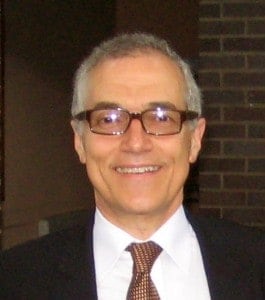
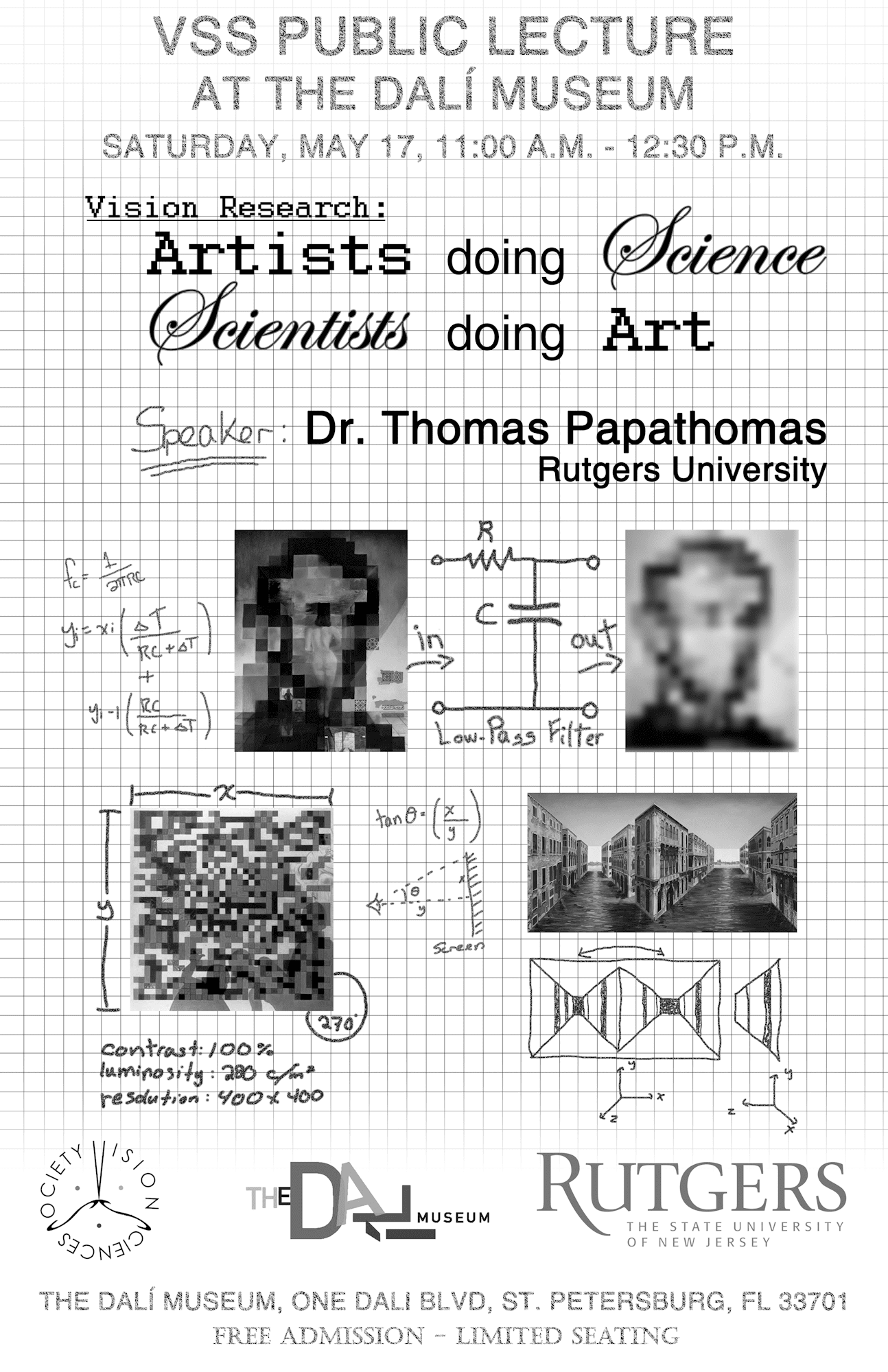
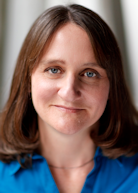


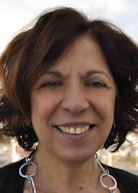
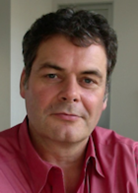
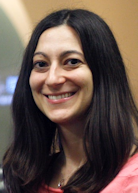
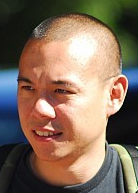
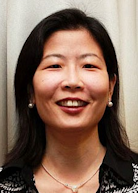
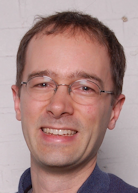
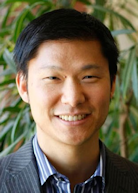
 Todd Horowitz
Todd Horowitz Michael Steinmetz
Michael Steinmetz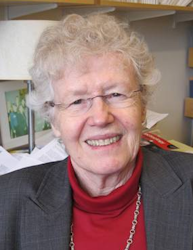 Dr. Mary Potter, better known as Molly Potter, a professor of Psychology at the Massachusetts Institute of Technology, is the winner of the Davida Teller Award 2014. Potter is known for her fierce intellect, her deeply original experiments, and her fundamental discoveries about human cognition.
Dr. Mary Potter, better known as Molly Potter, a professor of Psychology at the Massachusetts Institute of Technology, is the winner of the Davida Teller Award 2014. Potter is known for her fierce intellect, her deeply original experiments, and her fundamental discoveries about human cognition.